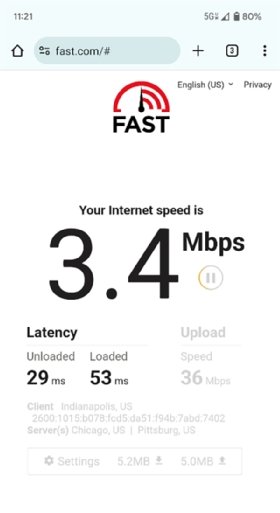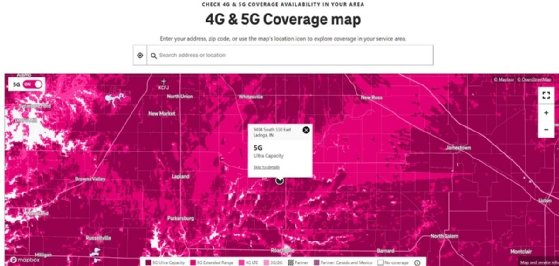Top 5G limitations and challenges for businesses
While 5G has advanced in recent years, the fifth generation of cellular technology still presents some challenges, such as wavelength limitations and cost considerations.
Mobile telecom carriers are far enough along migrating to 5G that the technology can be considered almost ubiquitous. This provides opportunities and benefits to businesses as they plan their future network strategies. But 5G still isn't a slam dunk that always lives up to the accompanying hype.
In theory, 5G technology should reliably deliver low latency and higher speed and bandwidth than 4G. The 5G promise of better support for real-time applications and data-rich mobile apps is frequently touted. But actual results often differ as the entire paradigm is still profoundly variable in reality.
Despite 5G being here enough to qualify as the mobile data option of choice and a viable enhancement to overall wireless connectivity approaches, enterprises should be mindful of some caveats. Below are five 5G limitations enterprise network teams could encounter.
1. Proximity (usually) dictates performance
The carriers are reworking the overall mobile network landscape with upgrades and additional sites to support 5G. As with almost any wireless technology, the closer the client device is to the network node, the better the connection and performance is -- barring external factors, like interference.
But 5G also has a fundamental characteristic at the physics level that it needs to overcome. At its best, 5G uses millimeter wavelengths, which are shorter in wavelength than 3G and 4G and don't travel as far with the same power levels.
While an individual 5G cell's coverage is typically smaller, 5G as a network protocol framework can carry more data. To combat the smaller cell footprint limitation, carriers are deploying much larger antenna arrays where needed to optimize coverage. Beamforming techniques are also used with these larger antenna configurations to help the 5G system overcome obstacles by enabling packets to traverse multiple paths in the environment to reach individual client devices as they move around within the coverage area.

All this said, users can still be close to a major 5G network but be disappointed with its performance if the network is using legacy hardware or lower-performing spectrum. As an example, my somewhat new 5G phone typically has underwhelming performance from my location on the western side of Indianapolis.
2. Spectrum and bandwidth
The spectrum that 5G is allowed to use is somewhat strange to comprehend since there's no clear definition of singular start and stop frequencies. Three distinct bands are in play, each with its own characteristics. At any given time, one or all bands may be in use within a cell, and performance can range from impressively fast to as slow as 3G used to be.
Service providers that want to deliver the best 5G experiences are sharing more of their allotted radio frequencies between 4G and 5G and prioritizing for the latter. The highest performance and low latency of 5G happens mostly in the millimeter wave deployments, which are far more range-limited.
When shopping for 5G services, spectrum is a key consideration in choosing both carriers and equipment. Much of the overall 5G deployment is still over legacy 3G and 4G spectrum, enabling backward compatibility with older devices, but performance might suffer.
Whether this is acceptable or not depends on an organization's requirements. It can also be difficult to get a clear read on what a given carrier's version of 5G truly amounts to in a specific location from the perspective of spectrum.
One of the ways 5G overcomes the bandwidth limitations of today's systems is through network slicing. Network slicing takes a page from the virtualization trend that has driven greater density, capacity and capability in data centers by "slicing" up resources in order to share more idle resources and increase overall usage. With network slicing, 5G carriers have better use of their networks, handling more users and transferring more data simultaneously.
3. Rural and remote locations
Not surprisingly, rural and remote locations have not been the highest priorities as 5G rollouts have progressed, with the carriers first focused on urban areas. At the same time, though, penetration into rural markets is happening, with 5G showing an ever-bigger presence on carriers' coverage maps.
When I travel in rural areas here in the Midwest, I often find recently installed 5G where you may not expect it, and it usually performs quite well. Look at T-Mobile's coverage map, and you see many rural Indiana towns, like Ladoga (population around 1,000), now have 5G service available for subscribers, with home internet service an eventual possibility as 5G networks mature.

Using the T-Mobile example here, we know 5G is not a given out in the rural spaces that have more cornfields than people. But the coverage map is still impressive.
While mobile applications abound in verticals such as agriculture and mining, carriers still might not find it cost-effective to deploy 5G in some remote locations. Do these applications need 5G? That depends on the situational specifics. Remote rollout could happen if a large customer is willing to help cover costs or if an existing cabled backhaul already exists. And private 5G may be an option in many targeted cases.
Another factor in the rural 5G equation is the lifecycle replacement of older 3G and 4G systems that may be hard to support as they age. Economically, the 5G sweet spot for carriers is when they can take 3G and 4G systems offline as 5G is deployed.
4. Security
Security is everyone's concern these days, whether you use the network or provide it. The overall architecture of 5G, especially in the back-end provisioning and handling, provides the opportunity for better and more granular security capabilities on the carrier side. Additionally, as we have seen with previous wireless technology transitions, security is primarily addressed on the latest platforms first, so it's assumed 5G largely delivers better security.
5G has a different security model than 3G and 4G as it includes new security capabilities. The good news for businesses is carriers handle most of this implementation. But, for businesses that build network services on top of 5G cellular networks, understanding these new security models is critical to ensure they are building comprehensive, secure services.
From a security perspective, it's critical that organizations test what they hope to do over a 5G network before production rollout.
5. Cost
Whether 5G is part of a lifecycle refresh of client devices or a new network option to use, it comes with a price tag. In some cases, organizations may simply replace phones or cellular routers. In other cases, businesses may consider new subscriptions and possibly private 5G if the situation requires it.
With 5G, expect new line items in the budget. If businesses are not prepared fiscally, they may have to defer organizational migration to 5G as part of their overall networking plan.
How can businesses address 5G challenges?
Marketing departments would have us believe that 5G is a must-have for both consumer and business applications. But what 5G is and isn't varies right now, so it's important to approach the topic with eyes wide open. When addressing the challenges of 5G, businesses should consider the following factors:
- What can 5G deliver specifically where you hope to use it? Make salespeople prove their claims before you write the check. Understand that 5G continues to be an evolving technology.
- In many situations, know that the 5G hype outweighs reality for some time to come.
- No one is giving away 5G for free, so clearly understand how 5G might affect your IT spend both upfront and in the future.
- If private 5G is considered, do a legitimate proof of concept with clear objectives before committing to the technology.
Overall, as businesses migrate to 5G, they need to comprehend not just the benefits, but the challenges as well. While some 5G limitations are evident, the long-term advantages of 5G should outweigh the disadvantages of 5G. Over time, 5G should introduce new opportunities for businesses to become more agile and competitive.
Lee Badman is a network architect specializing in wireless and cloud technologies for a large private university. He's also an author and frequent presenter at industry events.







